IndiaWilds Newsletter Vol. 6 Issue XII
TSR Subramanian Committee report: Worst threat to Wild
India since the British
The High Level Committee report is for the industry, by the Industry.
The MoEF&CC had set up a High Level Committee (HLC) headed by TSR Subramanian to review various laws. The committee has now given its report, suggesting a complete overhaul of the laws specifically in areas related to environmental clearance to Industries.
While reading the preamble of the Subramanian committee report, one may get hope as it makes some right noises, but soon suggests the exact opposite:
In the race for development, which ideally ought to improve the quality of life of the citizen, the relationship with environment is often lost sight of. That environment is sacrosanct; that the knowledge and application of science warrants harmonious use of natural resources without destabilising the cycles of nature; that the purity of air, water and land has been inherited by a generation in mortgage for children of tomorrow; that it is implicitly imperative for each generation to leave the environment to the next generation in a better state than they found it. (page 7)
The efforts of the Committee were primarily focused in line with the philosophy as spelt out above to secure the transfer to the maximum for future generations. (Perhaps the committee doesnt understand that the transfer of maximum is completely intangible and hence a bogus idea. A profligate man hell bent on consuming all his income as well as present assets is not going to leave much for his child. He can very well argue that he tried to leave the maximum for the future generation which is absolutely nothing. When the committee uses such weird logic, the outcome of their report can be easily guessed. Nevertheless read on to learn more)
Free For All:
The committee believes that All the Acts under review of this Committee fail the litmus test. Either penal provisions are lacking, or not sufficient, or not proportionate; or the criminal justice system is not appropriately aligned.
Once the weakness has been identified, we expect that the committee would have proposed to plug the loopholes and remove the weakness.
Instead, the committee in its infinite wisdom has proposed to abolish all checks and balances and depend on self-certification.
A new concept of utmost good faith has been inducted, through a new legislation, to ensure that the applicant for clearance is responsible legally for his statements, but would be severely penalized, as prescribed, for any deliberate falsehood, misrepresentation or suppression of facts. While this would throw the responsibility primarily on the project proponent, this would also significantly reduce Inspector Raj.
The committee has prescribed increased levels of penalty if you are found guilty. However, how the NEMA or SEMA (the new bodies which would replace the CPCB and SPCBs respectively) would find the guilty is yet to be established.
The HLC report says The special environmental courts designated under this Act shall take cognizance of the serious offences only on a complaint by the officers authorized by the NEMA or SEMA, as the case may be. A member of the public may also file a complaint provided that the complainant satisfies the court that the authority concerned failed to act on his complaint lodged during three clear working days before approaching the court and provides credible evidence of his bonafides. (page73) Hence it primarily boils down to the authorized officers to track the guilty.
Even if there were a system of checks, then the officers will not follow a strictly random sampling, which has statistical validity, but will follow an accidental sampling. Under statistics, a random sampling system means each sample has an equal probability of being caught. So if you are doing a survey with random samples, means say every first house of a row is taken as a sample or every 5thhouse of every row. On the other hand, most of the times though the word random is used, accidental sampling is done. For example, instead of surveying say every 1sthouse of a row, one goes and surveys wherever a respondent is found in whichever house.
Now there would be enough incentive to the game the system. So most likely these officers will go and check industries on their whims and fancies. Which means the guilty with the collusion of these officers will not be checked and hence will continue to go scot-free.
When there are large corporates like Enron folding up due to fraud, how the committee is able to think of utmost good faith? Which corporate entity in India are you going to believe? Remember that Reliance was raided by orders from non other than the BJPs Shri Lal Krishna Advani and its senior officials jailed as confidential documents under OSA (Official Secrets Act) were found. 2G case where the losses to the Government were estimated to be 1,76,000 crores by CAG is still going on with some corporate head honchos arrested and now under bail. Related to this case, the Honorable Supreme Court had found the CBI Chief to be complicit in this case and had ordered his removal from this case. The Coal Scam is being investigated and majority of the mine allotments have been cancelled. The reputed Birla group as well as other group like Jindal is being investigated. In another case the Honorable Supreme Court is aghast that even placing the owner of Sahara group in prison is not of much help as they are not depositing money with SEBI. So even a prison sentence is not a deterrent for some.
The social mores have been changing. No longer a Railway minister resigns when there is a train accident like Lal Bahadur Shastri did. Today ministers are corrupt and are ready to falsify even their academic credentials. No longer heroines fear to take the vamp role. In fact, porn stars have been accepted as Bollywood stars. So in this ethical vacuum, placing faith in the utmost good faith of corporates is either stupidity at its worst or simply a case of ushering an era of laissez-faire where corporates are free to do as they wish.
And if there is a huge blast like the Bhopal tragedy before any random or accidental check as mandated by the benevolent TSR Subramanian committee then who is going to be responsible?
Blaming Judiciary & Stripping its powers on environmental issues:
The HLC opines The Executive, as pointed out has not covered itself with glory indeed it has invited the attention of the judicial branch through lack of basic care. The statutes are primarily aimed at enhancing the environmental components, be it forest cover or wildlife population or keeping air and water clean. Who pays for pollution? Who suffers? Who enforces? Who monitors? Who punishes? The legislations are weak, monitoring is weaker, and enforcement is weakest. (page 8/9)
However, it then moves on to blame the judiciary by saying Continued lack of credible policy and implementation response by the executive has now seemingly rendered the judicial system appearing to intervene at the slightest and first pretext appearing at first sight not to provide solutions but to complicate the issues further. (page 22)
With this belief of Judiciary over-reach, the HLC proposes to strip powers of any court to stop a project cleared by the environmental authorities.
Exclusive Power of the Environmental authorities: Notwithstanding any judgment, decree or order of any court, the subject of permission to cut trees or to deal with forest, forest product or forest land in connection with any project that has received environmental clearance under this Act, or in connection with road building or any other activity of public importance as declared by the Government and approved by the Cabinet specifically or generally, shall be dealt with only by the Environmental authorities concerned who shall decide the amount needed for compensatory afforestation and collect the same before granting permission. The decision of the authority, subject to the decision of the Government in revision, shall be final. (page 71)
First the Government throws a bill reined in the Supreme Courts to appoint judges. Now through this, they are trying to prevent the courts to hear environmental matters. So any forest can be opened up to a project in-lieu of compensatory afforestation. We can plant trees but cannot create a forest. We dont even understand the complex web of inter-relationships that exist between various species in a forest. This is far reaching changes which will put the last nails in the coffin of our wilderness areas.
Subjective Criteria- Intentional Loopholes:
The committee says that It is the view of the Committee that areas which are rich in biodiversity must be strongly protected and activity allowed in these areas only when there is an overwhelming advantage in terms of economic development.
When the Government wants it can always justify a project based on overwhelming advantage. The terms used by the committee like overwhelming advantage, utmost good faith are very subjective and appears to be designed to be used by the authorities in allowing various projects. We are appearing to be like China, decimating our environment and forests for industrial growth.
Denotifying designated forests A way out for Compensatory Afforestation:
The committee wants to denotify all the plantations that were designated as forests, saying that these social forestry was done and the user departments in some cases had asked protection from felling of these trees by getting these places notified as forests. On the other hand the committee wants that large tracts of private land with tree cover be allowed to be traded to Industries who are required to do compensatory afforestation in-lieu of setting up a project in a forest land. So now the industries can easily buy back the plantations which were denotified by the Government and then they can handover these back to the forest department as part of their compensatory afforestation requirements. In one swift stroke, the committee removed all pains from industries. So they need not do even any compensatory afforestation. In short, everything is ready to be sold to the industries. A sad day indeed for our environment and wildlife.
Trashing Forest Conservation Act:
The HLC, has given a plethora of suggestions to trash the existing FC Act, 1980 in order to benefit the industry. At the moment, proposals for diversion of forest land require certification from concerned authority to the effect of settlement of rights under Forest Rights Act. The process requires approval of Gram Sabhas. The HLC argues that for linear projects like roads, gas pipelines, irrigation canals, transmission lines are generally for the benefit of the community at large so the villagers and other forest dwellers will benefit from this project and hence recommends to take away the need to seek approval from the gram sabhas. Unfortunately, nothing can be farthest from the truth. Will the TSR Committee care to explain how a forest dweller will be benefitted when Reliance lays down its gas pipeline? If a transmission or power distribution company decides to set up a high power transmission line over a village, under TRS Committees recommendation they will not be able to object.
In the name of Streamlining process?
In the name of streamlining procedures, the committee proposes self-certification.
The present system is procedure-oriented, with insufficient focus on the need to safeguard environmental considerations. From the analysis of the data seen by the Committee, the average time taken for clearances works out to significantly longer than specified in most cases, whereas most projects sooner or later obtain approval; one analysis indeed indicated that the percentage of approved projects works out to 99.1% clearly the focus is not on substance. (page 45)
Interestingly the Committee makes no mention of the data or the supplier of data on the basis of which it makes all these inferences. There is no mention of name of respondents in the Annexures.
The committee finds flaws with the existing system as to how the existing EIA is inadequate among other things. However, instead of strengthening the process, it makes a blatant attempt to completely do away with it.
The Committee takes note of the elaborate laid down procedures for all the types of clearances and consents by various government authorities. There is overdependence on the information provided by the project proponents it should be noted that in the current dispensation, the consultant is remunerated by the project sponsor, and has no incentive to bring out all the relevant facts, some of which may be adverse to the interest of the project proponent. The most important task of conservation of environment has been lost in the present approval process in GoI as well as at the level of SPCBs. Little effort is made to assess damage to environment; there is no prescription for environmental reconstruction; there is no costing imposed for environmental degradation and subsequent reconstruction programmes; the cumulative impact of the project output on depleting natural resources and/ or polluting the environment is not taken into account in an integrated manner in the decision making process for project clearance. (page 48)
No Public Consultations for majority of cases:
The committees suggestions is in sync with industries who have in the past tried to only limit participation in the consultation process and keep away NGOs and other people who are not agreeable to the project.
The committee recommends, The method of public consultation prescribed in the existing notification should continue with the modification that only environmental, rehabilitation and resettlement issues are captured in the public hearing. A mechanism should be put in place to ensure that only genuine local participation is permitted.
The TSR Committee says There is no necessity for public hearing in locations where settlements are located away from the project sites.
So in places like Ratnagiri where releasing hot water by the Nuclear Power Plant to the creek is going to impact the livelihood of the fishermen or in Gujarat where Adanis Mundra SEZ project blocked the access of fishermen to the sea, with the changes proposed by the TSR committee, these people will have no right to raise their voice.
The committee also wants to dispense with local consultations in respect of situations when it is reported that local conditions are not conducive to the conduct of hearing, or in the matters of projects of strategic importance and national importance.
So when the local stakeholders overwhelmingly dont want a project for example in Ratnagiri or in Odisha against Posco project, the MoEF can then term the situation as not conducive to conduct hearing and simply give approval to the project. The TSR Committee is making a savage attempt to break the democratic foundations on which Modern India has been built.
TSR Committees priorities are clear. It wants to fast track projects in power sector, coal mining arguing that the power sector and coal mining which are the growth engines for national economy may be given a fast-track treatment through special procedures. It also wants to fast track laying of gas pipelines, transmission lines and transportation lines terming those as beneficial to the community at large. By and large these projects have the maximum impact on our fragile ecosystem. So fast-tracking these projects and silencing its opponents will be huge blow to our environment and wildlife and can only fasten the onset of climate change.
Limitations of Science:
The TSR Committee believes that all environmental clearances should be done by the use of science and technology and doesnt appear to believe that there can be limitations to science or interpretations of the data. However, later in the report it talks about limitations of science and cautions the MoEF&CC about GM (Genetically Modified) crops. Though it is a welcome move that the committee has taken note of the adverse effects of GM crops and to the fact that European countries havent allowed field trials of GM crops, the TSR Committee should have also been equally cautious about the complete dependence on technology to clear projects.
The committee believes that areas with 70% and more canopy coverage would be No Go areas. However, it doesnt take into account that not every place has got 70% canopy coverage. Only in very few places today, one finds such dense forests.
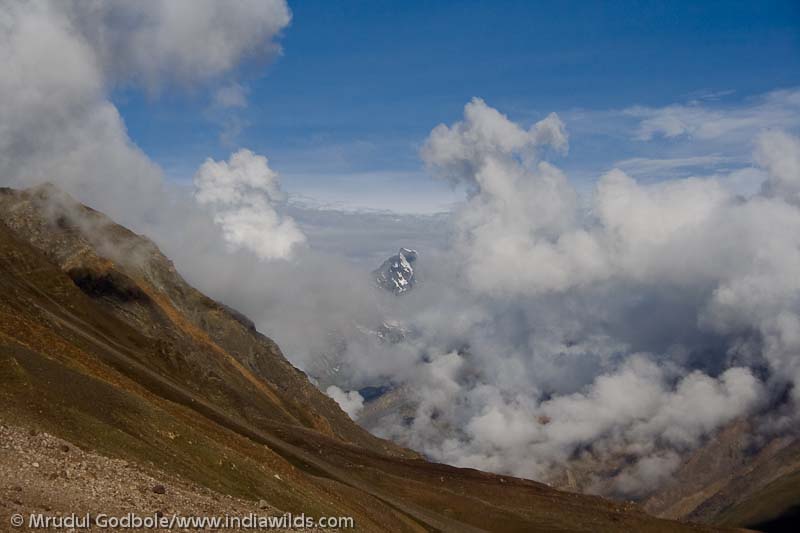
Without 70% canopy cover and close to border areas, these pristine places can be up for grabs
Also, simply getting data about canopy coverage may not tell us about the health of the place. For example a patch of forest can have lantana (an exotic plant that has been the bane of our forests) and they grow into tall and dense bushes and can give misleading canopy cover figures.

Grasslands don’t have 70% canopy cover and according to the TSR Report can now be given to industries endangering the life of its denizens like this blackbuck
India is blessed with different bio-geographic zones and different forest types. A wetland or swamps, dry scrub forests, grasslands or high altitude montane ecosystems are as valuable as dense forests with 70% or more canopy cover. So suggesting No Go areas which are only limited to 70% canopy cover suggest either TSR Committee has no idea about Indias biodiversity and forest types or it just wants to do away with Indias natural heritage.
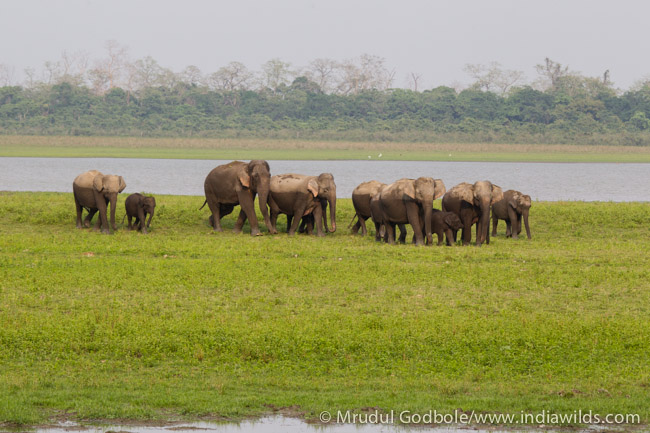
Migratory corridors for megafauna like elephants will be opened up for industries as these areas won’t have 70% canopy cover. Human animal conflicts will increase
Bowing to Religious lobby:
Whereas TSR Committee talks about using science to open up Indias forests for allowing industries at another level, it disowns science to please a few religious fanatics. It proposes to permit people to enter into forest areas to pour milk in the anthills on Naga Panchami day. People mistakenly believe that snakes drink milk and on the day of Naga Panchami they pour milk and the poor snakes, who are poikilothermal ie cold-blooded, suffer when milk is poured over them. Some of them are able to escape through different exits. Some snakes are not so fortunate.
The TSR Subramanian committee has made a few other suggestions which appear more of an afterthought.
Ban Plastics:
Among other things the TSR Committee report also includes recommendation to include polythene bags and plastic bottles in the banned list of products under section 32 and stop visitors from carrying those into the PAs. I think they should have mentioned disposable plastic bottles as no one throws expensive bottles like that of Tupper Ware but only throws the disposable packaged drinking water bottles. The committee doesnt talk about littering of wafers packets, aluminium foil food wrappers in the forests. Many animals love to lick the wafers packets to get the salt content and either die by getting hit by speeding vehicles or swallow and die a painful death. The Committee report doesnt take those things into congnisance. So though banning polythene bags is a good idea, not including other items like wafers packets and aluminium foils in the ban list doesnt solve the purpose.
Noise Pollution:
The TSR Committee proposes to incorporate noise pollution as an offence in EP Act and talks about loudspeakers in religious places. Recently there has been demand of banning loudspeakers in Mosques citing that puja pandals are required to adhere to noise pollution. It would be good if noise pollution can be included as an offence and none of the religious places be it Hindu, Muslim, Christians or of any other faith, allowed to violate it. However, one wonders if that can be implemented.
The TSR Committee has also made a few other suggestions in creating separate Environment and Forest services, generation of awareness of ecology and environment as well as Municipal Solid Waste Management and vehicular air pollution among others. However, even though they have talked about need for systematic Solid Waste Management, an area which is getting more interest from industries because of revenue potential, the HLC has failed to mention the need to implement the e-waste rules where the industry has an onus of taking back and recycling the electronic wastes. Clearly the thrust areas of this committee are as per the requirements of the corporates. So it wont be inappropriate if we conclude that the HLC report is for the industry, by the Industry.
Wild India in dire straits:
Till date the Britishers had inflicted the worst blows on Indias natural heritage. However, this High Level Committee headed by TSR Subramanian will have an even deadlier impact on Indias forests and wildlife. Ecologically fragile areas will be opened up to corporates to set up industries and will fragment the already fragmented wildlife habitats. Fragmentation of habitats leads to loss of genetic diversity and many species will become locally extinct. Already 24.8% of Indias Geographical area is undergoing desertification. When we start declassifying existing social forestry schemes as forests and then by sleight-of-hand, hand it back to Industries to fulfill their compensatory afforestation schemes, the impact on forests and tree cover will be huge, which will further quicken the desertification process. On one hand the Government has rechristened MoEF to MOEF&CC which is supposed to give extra thrust to climate change, but on the other hand it undertakes efforts like this TSR Subramanian High Level Committee which aims to decimate our forests and quicken the process of climate change.
Wildlife and Environment had very few champions among politicians. With the opposition virtually decimated in the May 2014 elections the Government doesnt worry about-facing any challenges in the parliament to its efforts to change the various acts governing environment, forest, wildlife and pollution. Coupled with the fact that the environment and wildlife lovers by and large remaining quiet due to fear of persecution, the fate of Indias Wildlife and Wilderness areas appears to have been sealed.
(Disclosure: The Author has held senior positions in corporates as well as that of Executive Director of MAIT- an Industry Association in the past)
Flying Water Tankers
Indians have become used to the sight of water tankers carry water to urban locations. The rapid urbanization and human population explosion has made our cities grow bigger and bigger with each passing day. From 6.2 crore people living in our cities in 1951, the rapid urbanization has resulted in 36 crore people living in cities in 2011. This has overstretched the ability to provide basic necessities of life to people living in the cities. Coupled with the unrestrained exploitation of ground water, the water table goes down resulting in wells becoming dry. The breakdown of municipal water supply due to creaking infrastructure as well as corruption has resulted in private water tankers supplying water to people. Rapidly these water tankers have become part and parcel of urban life. The importance of these water tankers have gone up so much that some of the water tanker owners have become influential and successfully transitioned into politicians.
However, till date we had never seen water being flown to a place using transport planes. Now the unthinkable has happened. India sent 400 tonnes of water primarily through its IL-76 Gajraj planes to Maldives through 10 sorties. The IL-76 planes of Soviet origin are used as transport planes and have been used earlier to transport rations to places impacted by natural calamities as well.

IAF IL-76 Gajraj planes carrying water to Maldives
Male, the Capital of Maldives faced massive water shortage due to a fire in the water treatment plant. This led to pitched battles in some parts of the city to grab bottled waters from the shops. Apart from sending bottled water to tide over the immediate crisis, INS Sukanya, a ship with desalination plant to convert sea water to drinking water was sent to Maldives. Another ship INS Deepak was later sent with around 800 tons of water. This effort was later augmented by a further 1000 tones of water from India.
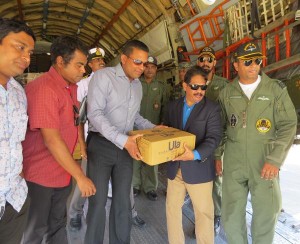
Indias High Commissioner in Maldives Rajeev Shahare handing over water. (Photo courtesy: MEA)
The current problem may be due to a fire. However, this situation has brought into light the plight of the islands and low lying lands which would be the first to get impacted by climate change and get flooded. In such situations, the fresh water resources like ponds, lakes etc would get inundated and the water would not be fit for drinking. A tsunami like situation can suddenly wipe out the desalination plants as well as the ability of the neighbouring nations to help. Unfortunately, the bitter wrangling between the developed countries like USA, large emitters like China and the other BRICS nations of Brazil, South Africa, India trying to protect their own interests have resulted in mild climate change targets and the poor and low lying countries waiting to be wiped out as the initial mass victims of climate change.
However, there would not be any winners in this battle. We continue to remain profligate in our habits and are increasingly aping the materialistic high carbon lifestyle of the west. Civilisations have prospered as well as perished due to climate change. Our own Harappa, a once prosperous part of Indus Valley Civilisation was wiped out due to annual monsoon rains stopping for a continuous period of 200 years.
Scientific studies have revealed the brutal reality of Harappa civilization being wiped out 4200 years ago. Will we wake up to this reality and start mending our ways?
IndiaWilds App for Android Mobile
In India most of the internet penetration is happening through mobile phones. And the existing users who have access to desktops and laptops are becoming much more mobile then they used to be a few years ago. So to raise awareness and reach out to more people we need to adapt ourselves and make IndiaWilds easily accessed through a mobile phone using android OS.
Today, I am pleased to announce that we have created a mobile phone app so that people can access IndiaWilds anytime, anywhere without being tied to a computer. No need to type. One can access at the click of a button.
We have developed this app through Business Compass LLC a company based in Randolph, New Jersey, United States so that we create a good app.
Awareness is the first step before a person can become a champion of wildlife. I hope this will help us in reaching out to more people to raise awareness and make a real impact on the conservation landscape. If you have an android device then please download the app from this link:
https://play.google.com/store/apps/details?id=com.businesscompassllc.indiawilds
Book Review
Elephant Gold: byP. D. Stracey
The review of the book “Elephant Gold by P.D.Stracey” can be found in this link:http://www.indiawilds.com/diary/elephant-gold-by-p-d-stracey/
Conservation News:
Javadekar calls for IPR less collaboration to fight climate change:
The Minister for MoEF&CC, Shri Prakash Javadekar delivered a statement as well as made an intervention to speak in the High Level ministerial dialogue at Lima and it appeared that he has learnt a thing or two in terms of play of words to create hype from his Prime Minister. He termed COP-20 in Lima as “COP of Hope”. He said that as a minister lot of hope of our people rest on his shoulders, hope of achieving a positive outcome to the meeting which will set us on the path to an ambitious, comprehensive and equitable agreement at Paris next year.
Shri Javadekar reminded the conference of the sad fact that 1 in every 7 persons in the world today still lives in abject poverty. The number of poor people in the world is more than twice the combined population of Europe. All of them are in developing countries. He said that India is determined to ensure development to all these people and provide them with basic services of energy, water, sanitation, healthcare, education and employment.
He said that India is also at the frontlines of facing the impacts of climate change. Shifting rainfall patterns, recurring floods, stronger cyclones and droughts or soil erosion are exacerbating the challenge of poverty eradication and necessitate the allocation of scarce national resources for preventing loss of human life. Citing Green revolution as a practical example of how India managed global collaboration by developing hybrids to increase food productivity and the collaborative research to find the God particle, he called on the world to foster a similar spirit of IPR less collaboration to address climate change and further asked Why do we want to profit from disasters?
He felt that there is a need to address the genuine requirements of the developing countries by providing them equitable carbon space to achieve sustainable development and eradicate poverty. Developing countries could do more if finance, technology support and capacity building is ensured. He called this to be a key focus of the new agreement.
The minister called upon the developed countries to urgently fulfill their legal obligations in the pre-2020 period. They must scale up their mitigation ambition now and urgently fulfill their promises for providing financial and technological support to developing countries. He said “an army marches on its stomach”. Global climate action rests on the shoulders of the means of implementation, especially on finance and technology and he said that it has to be addressed on an urgent basis.
Acknowledging that some announcements have been made by some countries to contribute to the Green Climate Fund, Shri Javadekar termed the scale of these announcements remains inadequate and far from what has been pledged.
He also said that INDCs (Intended Nationally Determined Contributions) should include all elements including mitigation, adaptation, finance, technology and capacity building and stated that India firmly believes that the INDCs are to be nationally determined and there shouldnt be any role for any ex-ante review in this process. Interestingly this view is similar to that of China which doesnt want to be questioned by anyone about its actions.
Oil Spill in Sundarbans
http://www.indiawilds.com/forums/showthread.php?16029-Oil-Spill-in-the-Sundarbans
Forest Department decides IIT-madras & Raj Bhavan shouldn’t be home for deers. Shifts all deers outside protected areas to zoos in Chennai
Equipment Discussions
Vitec Group buys SmallHD
http://www.indiawilds.com/forums/showthread.php?16036-Vitec-Group-buys-SmallHD
Sounds of Naure
Mole Cricketby Abhishek Jamalabad
http://www.indiawilds.com/forums/showthread.php?15938-Mole-Cricket
Natural History
COUNTRY NOTEBOOK: M. Krishnan: THE GIANT SQUIRRELBy Saktipada Panigrahi
http://www.indiawilds.com/forums/showthread.php?8852-Country-notebook-m-krishnan&p=72478#post72478
Stalk-eyed Flies by Abhishek Jamalabad
http://www.indiawilds.com/forums/showthread.php?16033-Stalk-eyed-Flies
Image of the Month
The Honour for the Image of the Month November 2014 goes to Abhishek Jamalabad’sSmall Tree Frog (Rhacophorus lateralis)
http://www.indiawilds.com/forums/showthread.php?16038-Image-of-the-Month-November-2014
Wildlife Photography
Leopard in KabinibyMrudul Godbole
http://www.indiawilds.com/forums/showthread.php?15900-Leopard-Kabini-3
JackalbyRajbir Oberoi
http://www.indiawilds.com/forums/showthread.php?15898-Jackal
Alpha MalebyNishith Kumar
http://www.indiawilds.com/forums/showthread.php?15962-The-Alpha-Male
European RollerbySucheth Lingachar
http://www.indiawilds.com/forums/showthread.php?15964-Winter-Guest(Europen-Roller)
Steppe EaglebyShyamala Kumar
http://www.indiawilds.com/forums/showthread.php?15903-Steppe-Eagle
Two Worlds by Bibhav Behera
http://www.indiawilds.com/forums/showthread.php?15969-Two-Worlds!
Starry Night by Jitendra Katre
http://www.indiawilds.com/forums/showthread.php?16014-starry-night
Malabar Pit Viper by Abhishek Jamalabad
I look forward to your inputs and support in preserving the last tracts of wilderness and wildlife left in our beautiful country. For other interesting articles and images check –http://www.indi
To post in the IndiaWilds forums, you can register free of cost using your Full Name as user id at
http://www.indiawilds.com/forums/register.php
If you are already a member of IndiaWilds and have forgotten your user id and/or password you can mail to
administrator@indiawilds.com
If you want to contribute original articles, or for any image enquiries please send a mail to
administrator@indiawilds.com
Regards,
Sabyasachi Patra
Profile:http://www.indiawilds.com/about.htm
Contact:http://www.indiawilds.com/contact_us.php
Facebook:http://www.facebook.com/pages/IndiaWilds/132629240481
Diary:http://www.indiawilds.com/diary/
Equipment reviews:http://www.indiawilds.com/diary/category/equipment/
Forums:http://www.indiawilds.com/forums/index.php
IndiaWilds Channel:http://www.youtube.com/indiawilds
Please post your views and feedback in the comments below.
- GoPro Hero 12 Black - 6 September,2023
- Leopards: The Last Stand - 2 July,2023
- Drifting in the Waters of Sundarbans - 26 March,2023



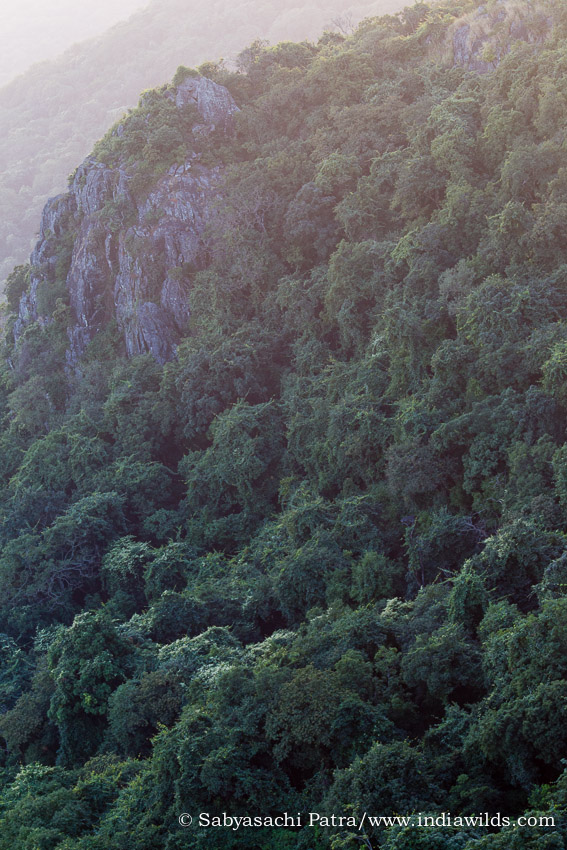
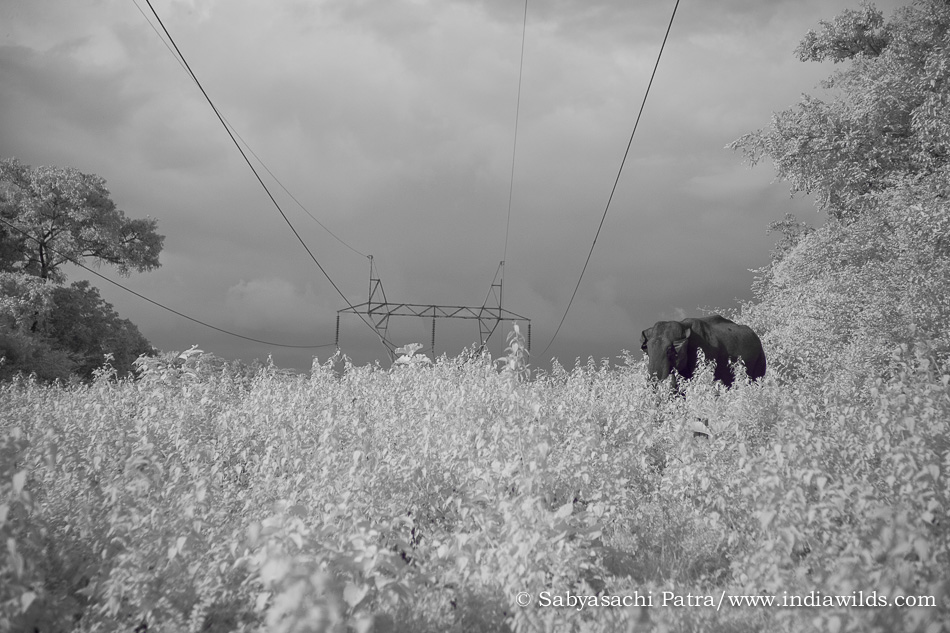




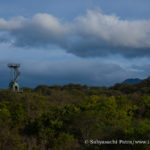



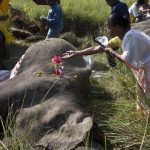




Very elaborate post covering vital issues.
The pic of deer chewing the plastic is disheartening.